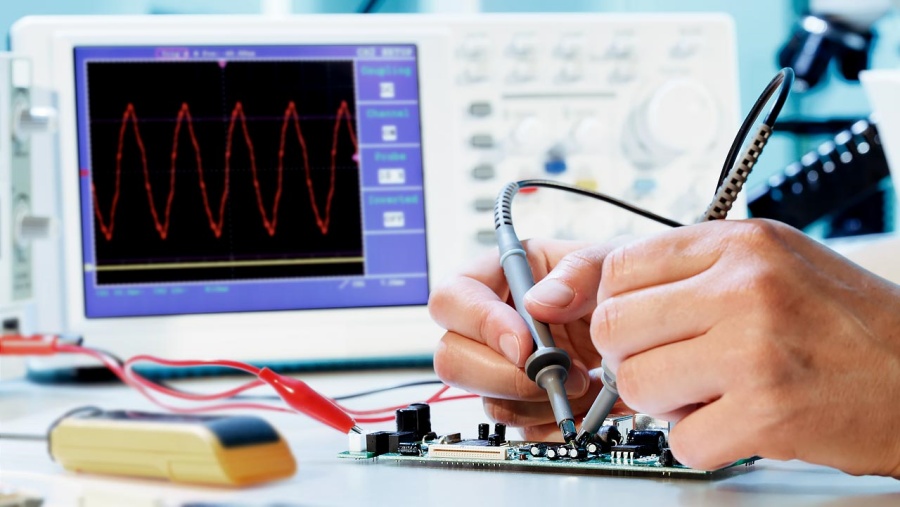A Deep Dive into Why and What Radar Chips Matter
Semiconductor chips are critical components in radar systems, particularly in industries such as automotive, aerospace, and defense. Radar technology relies on these chips for essential functions like rangefinding, speed measurement, and target identification. Since each radar application demands a specific type of chip, choosing the right one is crucial. Here’s a quick look at some of the most common radar system chips and models:
1.RF Front-End Chips
RF front-end chips form the heart of radar systems, responsible for transmitting and receiving signals. These typically include low-noise amplifiers, power amplifiers, and mixers.
Models | |
Brand | Infineon |
Type | 24GHz millimeter-wave radar front-end |
Application | Automotive radar, industrial and consumer radar sensors |
Features | Monolithic transceiver with an antenna interface, power amplifier, and low-noise amplifier |
Models | |
Brand | Analog Devices |
Type | 24GHz dual-channel transmitter |
Application | FMCW automotive radar, industrial radar |
Features | Frequency range from 24.05 GHz to 24.25 GHz, supports various antenna configurations |
Models | |
Brand | Texas Instruments |
Type | 77GHz millimeter-wave radar system-on-chip |
Application | Automotive advanced driver-assistance systems (ADAS) |
Features | Integrated processor and RF front-end, offering long-range sensing and speed detection |
2.Digital Signal Processing (DSP) Chips
DSP chips process radar signals, extracting vital information such as object distance, speed, and direction through complex algorithms.
Models | |
Brand | Texas Instruments |
Type | Multi-core digital signal processor |
Application | Radar signal processing |
Features | 8-core DSP designed for high-performance real-time signal processing |
Models | |
Brand | Xilinx |
Type | System-on-chip integrated with FPGA and processor |
Application | Radar signal processing |
Features | Reconfigurable architecture ideal for handling complex radar algorithms |

3.Power Amplifiers
Power amplifiers strengthen radar signals, ensuring they can reach distant targets.
Models | |
Brand | Qorvo |
Type | X-band GaN power amplifier |
Application | Defense radar, satellite communications |
Features | Operates in the 8.0 to 11.0 GHz range, with a 30 W power output |
Models | |
Brand | NXP |
Type | LDMOS RF power amplifier |
Application | Low- and mid-frequency radar systems |
Features | 1800 W output power, ideal for efficient, high-power density radar designs |
4.Analog-to-Digital Converters (ADCs)
ADCs convert the analog signals received by radar into digital form for further processing.
Models | |
Brand | Analog Devices |
Type | 14-bit dual-channel high-speed ADC |
Application | Radar signal reception and processing |
Features | Supports sampling rates up to 3.0 GSPS, making it suitable for wideband radar systems |
Models | |
Brand | Texas Instruments |
Type | 16-bit dual-channel ADC |
Application | Radar signal acquisition |
Features | Supports sampling rates up to 1 GSPS, integrated with digital down-conversion |
5.Frequency Synthesizers
Frequency synthesizers generate precise frequencies required by radar systems.
Models | |
Brand | Analog Devices |
Type | Wideband frequency synthesizer |
Application | Radar system frequency control |
Features | Frequency range from 55 MHz to 13.6 GHz, with low phase noise |
Models | |
Brand | Texas Instruments |
Type | Wideband PLL frequency synthesizer |
Application | Radar systems and test equipment |
Features | Frequency range up to 15 GHz, with support for low-noise clock generation |
6. Phased Array Radar Chips
Phased array radar chips adjust the phase and amplitude of antenna arrays, enabling beamforming and electronic scanning.
Models | |
Brand | Analog Devices |
Type | X-band phased array beamformer |
Application | Phased array radar |
Features | Four-channel beamforming chip, supports X-band radar systems |
Models | |
Brand | Qorvo |
Type | Phased array GaN power amplifier |
Application | Phased array radar systems |
Features | Operates in the 8.5 to 10.5 GHz range, with a 40W power output |
These semiconductor chips work in concert—through RF processing, signal processing, and power amplification—to drive advances in radar technology. Each type of chip plays a unique role, and selecting the right combination can significantly boost the performance of radar systems.

How ANDESOURCE Simplify Your Radar Chip Selection
In the world of radar technology, it’s easy to get lost in the sea of options, technical jargon, and chip models. But one thing is certain: you need the right radar chips to power your solution. That’s where ANDESOURCE steps in. We’re not here to overwhelm you with choices—we’re here to guide you to the exact solution that fits your needs.
When you work with ANDESOURCE, it’s about more than just buying components. We offer a comprehensive partnership designed to meet your radar chip needs. Here’s how we do it:
Consultation-First Approach: We start by understanding your project. Whether you’re facing a performance bottleneck or need chips that handle extreme environments, we take the time to dig into your technical and operational challenges. Only then do we recommend solutions.
Access to the Right Products: With our extensive inventory of radar chips from top manufacturers like Infineon, Texas Instruments, Qorvo,etc, we offer solutions for every type of radar application. Need something fast? Our robust stock ensures minimal lead times.
Efficiency & Reliability: We don’t just hand you a list of options—we deliver solutions. Our team’s focus is on optimizing your system’s performance, making sure the chips you choose work efficiently and reliably within your unique operational context.
Ready to simplify your radar chip selection process? Visit ANDESOURCE or reach out to our team for a consultation.We’ll offer you the best radar chip solutions.










